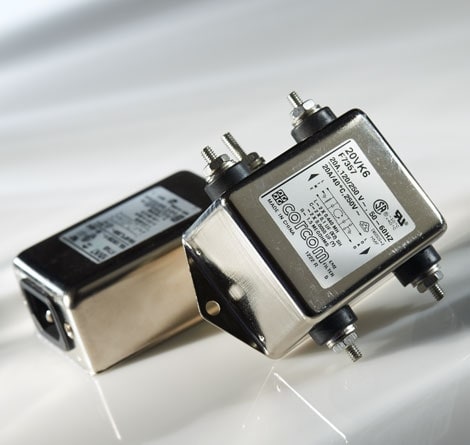In offline power supplies, Common mode emissions are best dealt with by using common mode chokes in conjunction with Y capacitors.
However, do you agree that the “poor man’s” common mode noise reduction technique of using uncoupled inductors in both the live and neutral lines is also a somewhat worthy technique for mitigating common mode emissions? The idea is that the frequency of the noise in the live and neutral is reduced by the uncoupled inductances and goes below the 150khz level which is less penalised by EMC tests….so in other words, the overall common mode noise overall is not necessarily reduced in energy, but is reduced in frequency to levels where it is less penalised by the EMC regulations….do you agree with this “poor man’s” technique?
Also, when a company takes a product to an EMC test house for an investigation scan for conducted emissions….why do the test houses always present a “mixed” result graph with common mode and differential mode noise ‘lumped’ together into the same graph? It is , after all, very easy for them to use a splitter in the LISN and give separate graphs showing either differential mode emissions or common mode emissions on separate graphs……so why do the test houses not do this? A “Mixed” scan result graph, with common mode and differential mode levels “lumped” together is pretty useless, as the customer will not know whether common mode or differential mode filtering is needed and to what degree in each case.
Some EMC test houses actually give separate EMC conducted emissions result graphs with Live and Neutral lines shown on separate graphs. It is said that if the Live and Neutral graphs are the same then there are no common mode emissions, but this is not true…because if there are uncoupled inductances in both live and neutral then there could still be loads of common mode noise in there even if the live and neutral scan graphs look the same…do you agree?
However, do you agree that the “poor man’s” common mode noise reduction technique of using uncoupled inductors in both the live and neutral lines is also a somewhat worthy technique for mitigating common mode emissions? The idea is that the frequency of the noise in the live and neutral is reduced by the uncoupled inductances and goes below the 150khz level which is less penalised by EMC tests….so in other words, the overall common mode noise overall is not necessarily reduced in energy, but is reduced in frequency to levels where it is less penalised by the EMC regulations….do you agree with this “poor man’s” technique?
Also, when a company takes a product to an EMC test house for an investigation scan for conducted emissions….why do the test houses always present a “mixed” result graph with common mode and differential mode noise ‘lumped’ together into the same graph? It is , after all, very easy for them to use a splitter in the LISN and give separate graphs showing either differential mode emissions or common mode emissions on separate graphs……so why do the test houses not do this? A “Mixed” scan result graph, with common mode and differential mode levels “lumped” together is pretty useless, as the customer will not know whether common mode or differential mode filtering is needed and to what degree in each case.
Some EMC test houses actually give separate EMC conducted emissions result graphs with Live and Neutral lines shown on separate graphs. It is said that if the Live and Neutral graphs are the same then there are no common mode emissions, but this is not true…because if there are uncoupled inductances in both live and neutral then there could still be loads of common mode noise in there even if the live and neutral scan graphs look the same…do you agree?





